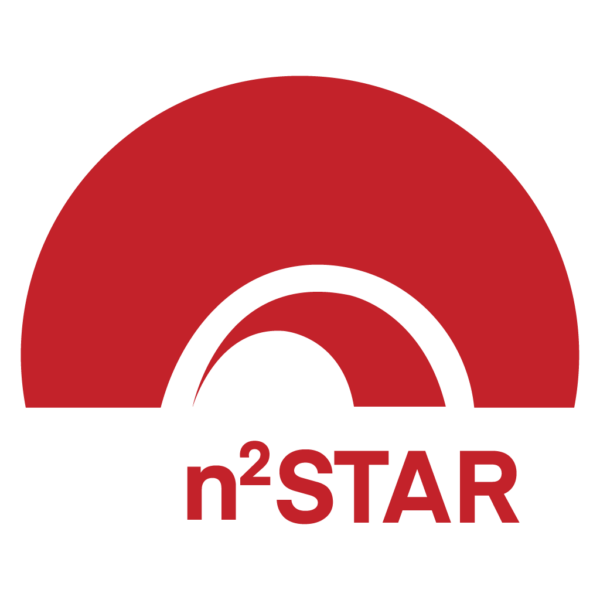n2STAR SEMINAR
*********************************
Speaker: Prof. Andrey L. Rogach
Department of Materials Science and Engineering, and Centre for Functional Photonics,
City University of Hong Kong, Hong Kong SAR, China
ACS Nano Editor
Title: Light-Emitting Perovskite Nanocrystals
Date: Friday, May 26, 2023
Time: 14.00 PM, ISTANBUL
Place: Koç University, Founders Hall
Abstract:
Chemically synthesized metal halide perovskite nanocrystals have recently emerged as a new class of efficient light-emitting materials which are particularly promising for the development of light-emitting diodes (LEDs) [1]. The stability of perovskite-based LEDs is still an issue [2], which can be partially mitigated by proper interface design, such as the use of inter-layer amine terminated carbon dots [3]. As for many other colloidal nanocrystals, proper surface passivation is key to ensuring high colloidal stability and processability of perovskites; this can be achieved by the employment of multi-amine chelating ligands [4]. We also show how water-stable CsPbBr3/Cs4PbBr6 nanocrystals with a mixed fluoropolymer shell can be applied for optical temperature sensing [5]. The use of lead-based metal halide perovskites is considered an issue because of the toxicity concerns related to the lead component. To avoid using lead in light-emitting perovskites, co-doping of cerium and bismuth [6], as well as tellurium and bismuth [7] into lead-free double perovskite Cs2AgInCl6 nanocrystals is a useful strategy resulting in their improved photoluminescence efficiency.
1. M. Lu et al. Metal Halide Perovskite Light-Emitting Devices: Promising Technology for Next-Generation Displays. Adv. Funct. Mater. 2019, 1902008.
2. L. Kong et al. Stability of Perovskite Light-Emitting Diodes: Existing Issues and Mitigation Strategies Related to both Material and Device Aspects. Adv. Mater. 2022, 34, 2205217.
3. W. Dong et al. Amine-Terminated Carbon Dots Linking Hole Transport Layer and Vertically Oriented Quasi-2D Perovskites through Hydrogen Bonds Enable Efficient LEDs. ACS Nano 2022, 16, 9679.
4. Q. Zeng et al. Surface Stabilization of Colloidal Perovskite Nanocrystals via Multi-Amine Chelating Ligands. ACS Energy Lett. 2022, 7, 1963.
5. Z. Lu et al. Water-Stable CsPbBr3/Cs4PbBr6 Nanocrystals with a Mixed Fluoropolymer Shell for Optical Temperature Sensing. ACS Appl. Nano Mater. 2022, 5, 4, 5025.
6. S. Wang et al. Co-Doping of Cerium and Bismuth into Lead-Free Double Perovskite Cs2AgInCl6 Nanocrystals Results in Improved Photoluminescence Efficiency. ACS Nanosci. Au 2022, 2, 93.
7. S. Wang et al. Co-Doping of Tellurium with Bismuth Enhances Stability and Photoluminescence Quantum Yield of Cs2AgInCl6 Double Perovskite Nanocrystals. Nanoscale 2022, 14, 15691.
Short Bio:
Andrey L. Rogach is a Yeung Kin Man Chair Professor of Photonics Materials at the Department of Materials Science and Engineering, and the Founding Director of the Centre for Functional Photonics (CFP) at City University of Hong Kong. He received his Ph.D. in Physical Chemistry (1995) from the Belarusian State University in Minsk studying the formation and properties of silver nanoparticles in different media. He worked as a postdoc and then as a staff scientist at the Institute of Physical Chemistry of the University of Hamburg, Germany from 1995 to 2002. From 2002–2009 he held a tenured position as a lead staff scientist at the Department of Physics and Centre for NanoScience of the University of Munich, Germany, where he completed his habilitation in Experimental Physics on light emission and harvesting with semiconductor nanocrystals. He joined City University of Hong Kong as a Full Professor in 2009 and has been advanced to Chair Professor in 2012. His research focuses on the synthesis, assembly, and optical spectroscopy of colloidal semiconductor and metal nanocrystals and their hybrid structures, and their use for energy-related and optoelectronic applications. He authored over 500 scientific publications with an h-index of 137 {Google Scholar} in these fields that have been extensively (over 67,000) cited, which ranked him as a Highly Cited Researcher (Clarivate Analytics) – Cross-Field 2018 & 2019 and Material Science 2020-2022.


